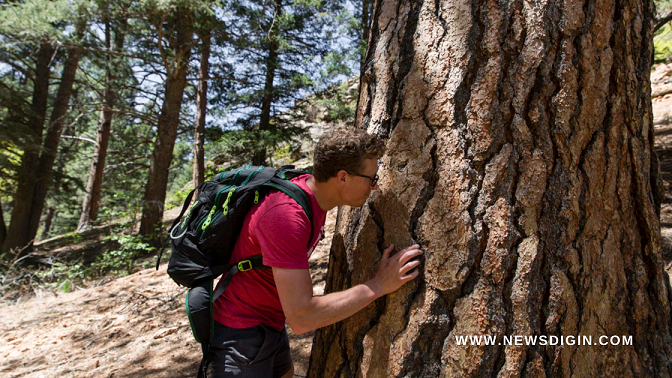
Ponderosa Pine Smell | Aromatherapy In The Rocky Mountains: More than a pretty face, the bark of any tree serves an important function. Barring is necessary for even the most beautiful aspen or majestic ponderosa.
To protect its delicate interior flesh from disease, parasites, and other environmental pressures, such as fire. Similar to our own skin. The outer layer of this protective covering is necessary to protect the biological functions taking on within it.
Ponderosa Pine Smell | Aromatherapy In The Rocky Mountains

Unique Features
In many circumstances, bark is beautiful to look at or experience because of its unique features.
This natural jigsaw puzzle-like pattern can be seen in the bark of ponderosa pine trees, which has enormous, deep furrow and groove patterns on its trunk surface.
Moreover, the colour of this specific tree’s bark changes as it ages from a dark blackish-brown to an orange-tinged sunset hue. This is an unusual colour to see in the Rocky Mountains.
Although it is beautiful to look at, the aroma of the bark of the Ponderosa pine is something to behold as well.
Vanilla or butterscotch-like aromas are release through the cracks between the bark on the tree on warm days. Generating a unique sort of Rocky Mountain aromatherapy.
Types
This tree, which can live to be 700 years old or more when it achieves maturity at 150 years old, undergoes a dramatic shift in look over its life cycle.
There are two types of ponderosas: mature and young. The Ponderosa’s crown gets less pointed as it ages. As well as the trunk self-prunes lower branches, making it more fire-resistant.
Additionally, the bark of an old Ponderosa becomes smooth and flaky, losing its deep furrows as the tree ages. There is so much variation in the colour of the bark between young and old trees that they are known informally as unique species.
Blackjacks or bull pines are the name given to the younger trees, which have dark, wrinkle bark.
Whereas the older trees are known as western yellow or western red pine, or ponderosa.
Unusual
It’s possible to spot an unusual pattern while hiking through ponderosa pine forests in the early spring. Many of the older trees, which may identify by their orange puzzle-piece bark, are only this eye-catching colour on one side.
It’s as if someone goes through the woods with a paintbrush and did a shabby job of touching up the trees with the brush.
The trunk’s “unpaint” side is a more usual grey bark hue. However it shares the same physical features as the brighter section.
Look closely at the ponderosas for a while and you’ll see an odd pattern emerging in the trees. It’s only one side of a bunch of pines that is orangey-red, and it’s always the same side.
As your curiosity grows, you’ll find yourself asking more and more questions regarding this amazing pattern. What if more light was striking one side of the tree because of the way it is expose?
Perhaps the wind or some other environmental component is to blame? Though many speculate that “sunlight” is a factor, simple observation is unlikely to reveal the solution.
Research
An official report confirms their first assessment of the situation. According to this theory, only the oldest pines and those on only one side of the tree are this hue. Due To sunlight bleaching. Bark’s colour varies from place to location.
According to the article, which said that it can be grayish-yellow, or bright yellow-orange. A ponderosa pine’s bark colour is likely influence by several elements.
Just like a person’s complexion is influenced by many factors. It’s not just the tree’s genetics, environment, or age that make it distinctive; they all have a role.
Almost everything in nature, including trees and their bark, appears to be more intricate than most people realise.
Also Read: